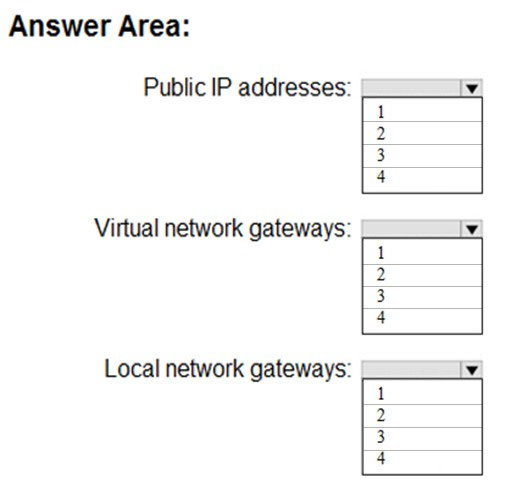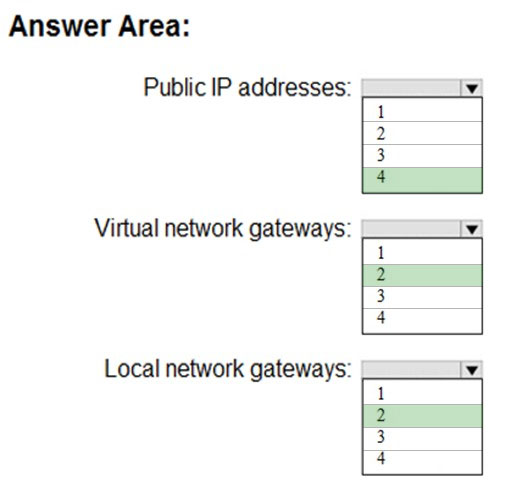

HOTSPOT -
You have an on-premises data center and an Azure subscription. The data center contains two VPN devices. The subscription contains an Azure virtual network named VNet1. VNet1 contains a gateway subnet.
You need to create a site-to-site VPN. The solution must ensure that if a single instance of an Azure VPN gateway fails, or a single on-premises VPN device fails, the failure will not cause an interruption that is longer than two minutes.
What is the minimum number of public IP addresses, virtual network gateways, and local network gateways required in Azure? To answer, select the appropriate options in the answer area.
NOTE: Each correct selection is worth one point.
Hot Area:


jasu
Highly Voted 4 years, 5 months agoMimimiao
4 years, 1 month agoducph
3 years, 9 months agoSanjSL
3 years, 7 months agoBenBen
4 years, 3 months agopaulot
4 years, 2 months agoTheOne1
3 years, 11 months agoJ4U
3 years, 10 months agoGranwizzard
Highly Voted 4 years, 5 months agoAnonymousJhb
4 years, 2 months agoGranwizzard
4 years, 5 months agomesk
4 years, 2 months agoMalonJay
3 years, 5 months agorxlicon
Most Recent 1 year, 10 months agosandeepmalik
3 years, 3 months agoDisco87
3 years, 3 months agoranjitklive
3 years, 3 months agoAngelDevart
3 years, 4 months agodoeeyedmonster
3 years, 6 months agoJayBee65
3 years, 4 months agoexammaster1000
3 years, 7 months agoAhmadtooo
3 years, 7 months agodonathon
3 years, 7 months agoSpooky7
3 years, 7 months agoSpooky7
3 years, 7 months agotallurhi
3 years, 8 months agostudent22
3 years, 8 months agopoplovic
3 years, 8 months agoKhannas
3 years, 8 months ago